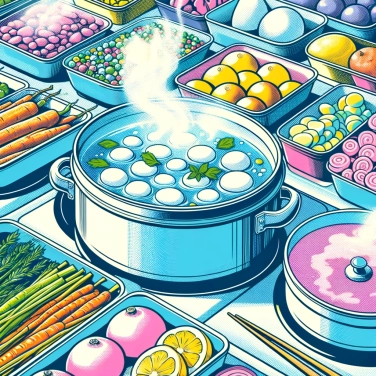Steaming preserves the nutrients of food better because it exposes the food to gentle and moist heat, thereby reducing the loss of vitamins and minerals compared to other more aggressive cooking methods.

Steaming is a gentle method because it heats food using only the heat from steam that circulates freely around it. Since the temperatures remain moderate and relatively low (around 100°C), the steam degrades heat-sensitive vitamins much less, such as vitamin C or certain B vitamins. In other words, foods retain their nutritional richness better simply because they are not subjected to violent or prolonged temperatures. As a result, we obtain foods that are more interesting from a health perspective, without significantly reducing their essential vitamin content.
When boiling or soaking vegetables for a long time in water, a good portion of water-soluble vitamins (those that love water, like vitamin C or B vitamins) goes directly into the water. Steaming, on the other hand, avoids this, as the food never comes into direct contact with the water. They therefore retain their precious vitamins and other nutrients much better. And we, in turn, reap many more health benefits without even realizing it.
Steaming typically occurs around 100°C, a reasonable temperature. As a result, there is little risk of producing toxic compounds. When you cook food at too high a heat, for example by grilling or frying, they often generate not-so-great substances (like acrylamide or heterocyclic amines) that can be potentially harmful to health. With steam, you avoid this trap. At moderate temperatures, very few or no aggressive chemical reactions are triggered, leaving you with safer and healthier food.
When you steam food, your ingredients do not soak in water, which helps better preserve minerals like calcium, magnesium, or potassium. These minerals and trace elements tend to dissolve when you plunge vegetables into a pot full of water, so you end up throwing away a good portion of these valuable elements with the cooking water. With steaming, this problem is significantly reduced. The result: you benefit more from their nutritional qualities without extra effort, and your food remains richer in essential elements that your body needs.
Steaming preserves up to 90% of the vitamin C in vegetables, compared to only 40 to 60% when boiling them in water.
You can subtly flavor your steamed dishes by adding aromatic herbs or spices directly to the water placed beneath the food.
Steaming typically requires less fat, thereby contributing to a lighter and more balanced diet.
Some precious nutrients, such as water-soluble vitamins (B vitamins and vitamin C), are very sensitive to heat and water. Gentle steaming is an ideal way to preserve their nutritional richness.
Yes, steaming preserves more water-soluble vitamins (such as vitamin C and B vitamins), minerals, and antioxidant compounds compared to other more aggressive cooking methods like boiling or frying.
The ideal cooking time depends on the type of food, but generally, it's better to opt for a short cooking time (5 to 15 minutes maximum) in order to best preserve vitamins and nutrients. Overcooking food systematically leads to a gradual loss of its nutrients.
Yes, adding herbs or spices while steaming is entirely possible and beneficial. It allows you to enhance flavor without adding fats, reduces salt consumption, and some spices can increase the antioxidant properties of meals.
It is not essential to acquire a specific steam cooker. A steaming basket to place in a pot, a metal colander, or even a pressure cooker can fulfill this function very well. The important thing is that the food does not come into direct contact with the boiling water.
Steaming is particularly suitable for leafy vegetables (spinach, kale), root vegetables (carrots, sweet potatoes), white meats (chicken and fish), as well as delicate fruits like pears and apples. This cooking method maximizes the preservation of their nutrients and natural flavors.

No one has answered this quiz yet, be the first!' :-)
Question 1/5